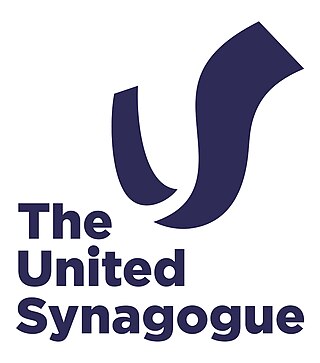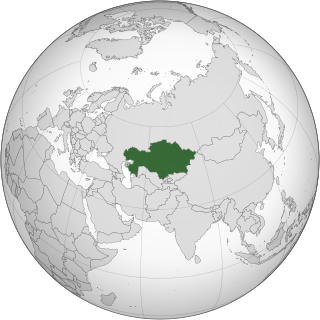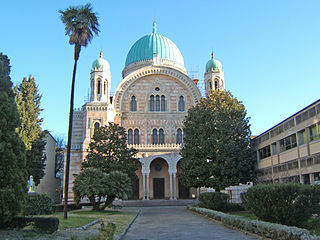
The history of Jews in Thailand began in the 18th century with the arrival of Baghdadi Jewish families and Jewish peoples from Europe during Napoleonic era (1799-1815).

The history of Jews in Thailand began in the 18th century with the arrival of Baghdadi Jewish families and Jewish peoples from Europe during Napoleonic era (1799-1815).
During World War II, Thailand was a part of the Axis, [1] however it has had friendly diplomatic relations with Israel since 1954. [2]
The Jewish community of Thailand today is mostly made up of the Ashkenazi descendants of refugees from Russia and the Soviet Union. There are also Persian Jews who emigrated during the 1970s and 1980s to escape the Iranian Revolution.
The country's permanent Jewish community, with over 1,000 members, is mainly located in Bangkok [3] (especially in the Khaosan Road area). There are also small groups of Jews with synagogues in Phuket, Chiang Mai and Ko Samui. During Jewish holidays, they are joined by vacationing Jews, especially from Israel and the United States.
During the 1960s and early 1970s, Rabbis who were Chaplains in the United States Air Force served as the Rabbi for the Jewish Association of Thailand. They conducted services on Friday Evening, Shabbat morning, the High Holidays and Festivals.
At the request of two of Bangkok's synagogues, Beth Elisheva and Even Chen, Rabbi Yosef Chaim Kantor took up residence as the first permanent rabbi in Bangkok, in 1993. He has been in Thailand since 1993 (when the Jewish Association of Thailand was founded), and is a member of Chabad. He was joined in 1995 by Rabbi Nechemya Wilhelm, also of Chabad.
Chabad of Bangkok is a small Chabad House in Bangkok, [4] catering primarily to young Israeli tourists. [5] It was an important center of disaster relief after the 2004 tsunami. [6] It serves Sabbath meals to hundreds of Jewish travelers every week, including during Jewish religious festivals such as Passover. [7] Due to security concerns in the aftermath of the 2008 Mumbai attacks, entry is restricted to the Jewish community. [4]
A complete range of Jewish education services is available in Bangkok, from kindergarten through high school. This includes a recently opened Orthodox yeshiva. After years of government refusal, permission has also been granted for the establishment of a Jewish cemetery next to the Bangkok Protestant Cemetery in Bang Kho Laem. [8]

Chabad, also known as Lubavitch, Habad and Chabad-Lubavitch, is an Orthodox Jewish Hasidic dynasty. Chabad is one of the world's best-known Hasidic movements. It is one of the largest Hasidic groups as well as one of the largest Jewish religious organizations in the world. Unlike most Haredi groups, which are self-segregating, Chabad mainly operates in the wider world and it caters to secularized Jews.

The United Synagogue (US) is a union of British Orthodox Jewish synagogues, representing the central Orthodox movement in Judaism. With 62 congregations, comprising 40,000 members, it is the largest synagogue body in Europe. The spiritual leader of the union is the Chief Rabbi of the United Hebrew Congregations of the Commonwealth – a title that bears some formal recognition by the Crown, even though his rabbinical authority is recognised by only slightly more than half of British Jews.

The history of the Jews in Indonesia began with the arrival of early European explorers and settlers, and the first Jews arrived in the 17th century. Most Indonesian Jews arrived from Southern Europe, the United Kingdom, the Netherlands, Belgium, Germany, France, the Middle East, North Africa, India, China, and Latin America. Jews in Indonesia presently form a very small Jewish community of about 100–550, of mostly Sephardi Jews. Judaism is not recognized as one of the country's six major religions, however its practices are allowed under Perpres 1965 No. 1 and article 29 paragraph 2 of Constitution of Indonesia. Therefore, members of the local Jewish community have to choose to register as "Belief in One Almighty God" or another recognized religions on their official identity cards.

The Remah Synagogue is a 16th-century Jewish synagogue and the smallest of all historic synagogues in the Kazimierz district of Kraków, Poland. The synagogue is named after Rabbi Moses Isserles (c.1525–1572), known by the Hebrew acronym ReMA who's famed for writing a collection of commentaries and additions that complement Rabbi Yosef Karo's Shulchan Aruch, with Ashkenazi traditions and customs. It is currently one of two active synagogues in the city.

The history of the Jews in Kazakhstan connects back to the history of Bukharan and Juhuro Mountain Jews. Kazakh Jews have a long history. At present, there are approximately several thousand Jews in Kazakhstan.

The history of the Jews in Albania dates back about 2,000 years. According to historian Apostol Kotani : "Jews may have first arrived in Albania as early as 70 C.E. as captives on Roman ships that washed up on the country's southern shores... descendants of these captives that would build the first synagogue in the southern port city of Sarandë in the fifth century...[but] Little is known about the Jewish community in the area until the 15th century."

The history of the Jews in Sudan goes back to a small but vibrant community of Jews who lived there from about 1885 to around 1970. Most of the community left for Israel or Europe after anti-Semitic attacks began to spread against both the Jews in Israel and those still living in Sudan.
The history of the Jews in Omaha, Nebraska, goes back to the mid-1850s.
The history of the Jews in the Jewish Autonomous Oblast (JAO), Russia, began with the early settlements of 1928.
The history of the Jews in Vancouver in British Columbia, Canada has been noted since the mid-19th century.

The Bet Israel Synagogue is the largest synagogue in the city of İzmir, Turkey. It was built in 1907 and is in the Karataş quarter of the city. It's one of the two major synagogues in İzmir, the other being the recently built Shaar Hashamaym synagogue.
The history of the Jews in Kyrgyzstan is linked directly to the history of the Bukharian Jews of Uzbekistan. Until the 20th century, most Jews living in the Kyrgyz areas were of the Bukharian Jewish community. However, during the 20th century, large amounts of European Jews began to emigrate to Kyrgyzstan which was then part of the Soviet Union, and a small amount of them still live in the country.

The history of the Jews in Innsbruck dates back to the 13th century, where the Jewish community of Innsbruck was relatively small with many expulsions occurring over the centuries.

The history of the Jews in Florence can be traced over nine hundred years. Florence is the capital city of the Italian region of Tuscany and of the province of Florence. The Jews of Florence have one of the oldest continuous Jewish communities in Europe. The historic Jewish community in Florence is one of the largest and one of the most influential Jewish communities in Italy. The Jewish community in Florence also serves the smaller neighboring Jewish communities in Pisa, Livorno, and Siena.

Spandau Synagogue was a synagogue at 12 Lindenufer in the Old Town area of Spandau, Berlin, Germany. It was also known as Spandauer Vereinssynagoge. The synagogue was built in 1894–95 and was destroyed on 9 November 1938 (Kristallnacht) when it was set on fire. The ruins were removed, probably in 1942. The site is now marked by a memorial tablet, installed in 1988. The congregation maintained a Jewish cemetery, on Spandau's Neue Bergstrasse, which was closed by the Nazi government and was evacuated in 1939 to the Cemetery of the Orthodox congregation Adass Jisroel in Berlin.

The history of the Jews in the Democratic Republic of the Congo can be traced back to 1907, when the first Jewish immigrants began to arrive in the country. The current Jewish Congolese population is mostly of Sephardi background.
The history of the Jews in Aruba can be traced back to the 16th century, when the first Jewish immigrants began to arrive. The first Jews in Aruba were Sephardi Jewish immigrants from Netherlands and Portugal. The first Jew to settle in Aruba was a Portuguese-Jewish worker for the Dutch West India Company named Moses Solomon Levie Maduro, who arrived in Aruba with his family in 1754.

The Jewish community of Houston, Texas has grown and thrived since the 1800s. As of 2008 Jews lived in many Houston neighborhoods and Meyerland is the center of the Jewish community in the area.
The history of the Jews in Central Asia dates back centuries, where Jews have lived in countries which include Kyrgyzstan, Kazakhstan, Tajikistan, Turkmenistan, and Uzbekistan.

The Jewish community of the Greater Cleveland area comprises a significant ethnoreligious population of the U.S. State of Ohio. It began in 1839 by immigrants from Bavaria and its size has significantly grown in the decades since then. In the early 21st century, Ohio's census data reported over 150,000 Jews, with the Cleveland area being home to more than 50% of this population. As of 2018, Greater Cleveland is the 23rd largest Jewish community in the United States. As of 2023, the Cleveland Jewish Community is estimated to be about 100,000 people.